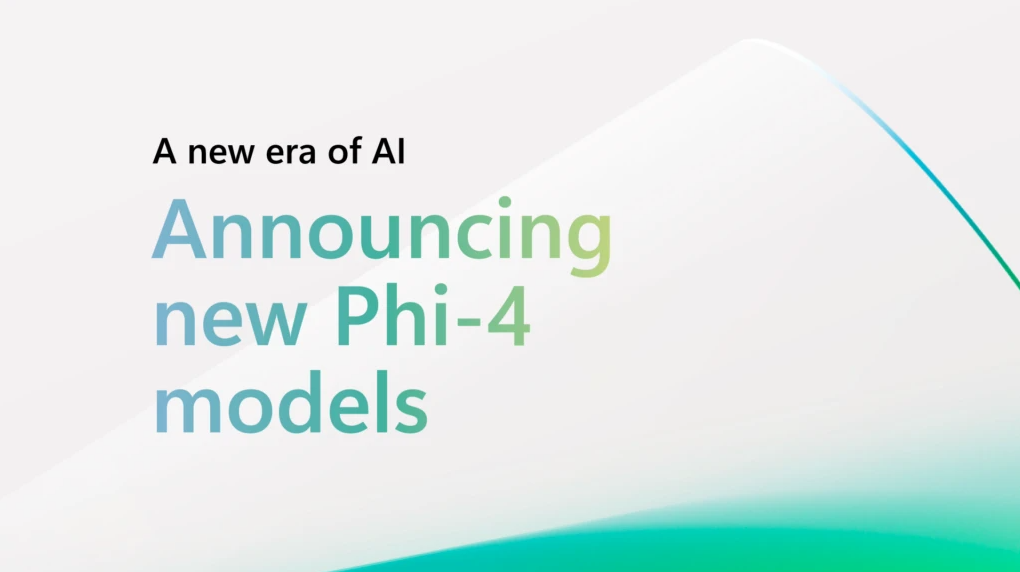Microsoft just unveiled new Phi-4 reasoning AI models — here's why they're a big deal
A new range of reasoning models are here

A new week, a new AI model. Joining the rush is Microsoft, launching 3 new models under the “Phi-4” range. These include Phi-4 reasoning, Phi-4-reasoning plus, and Phi-4-mini reasoning.
Apart from showing their commitment to the weird naming schemes found in the AI world, these names also give away the type of AI model they are.
Reasoning models have become all the rage recently. These are specifically trained to go beyond the simple answer or image generation, engaging in a more logical approach to prompts. These are often better equipped for fact-checking and complex problems.
Phi-4’s reasoning range builds on Microsoft’s “small model” family – a project started by Microsoft roughly a year ago.
Microsoft claims that Phi-4-reasoning-plus approaches the performance of Deepseek R1
The aim here is to build small language models, prioritizing efficiency and low cost. These differ from large language models, where they are fed huge amounts of data, allowing them to accomplish most tasks with immense detail, but doing so at a high cost.
This is completely separate to Microsoft Copilot and Copilot 365 — the brand's better-known AI models that serve both consumer and work-based tasks.

Instead, Microsoft’s new models focus on more specific tasks, prioritizing high-quality datasets and more specific training schedules to achieve high performance on a smaller scale.
Get instant access to breaking news, the hottest reviews, great deals and helpful tips.
Phi-4 reasoning is a 14-billion parameter model (parameters refer to how much a model knows; the higher the number, usually the more it knows). It was trained using high-quality web data and is best used for math, science and coding applications.
Phi 4-reasoning-plus is trained on a similar dataset, but it was trained to put in more effort to achieve better accuracy for particular tasks. Microsoft claims that Phi-4-reasoning-plus approaches the performance of Deepseek R1, despite it having a much larger parameter of 671 billion.
What can I do with Phi-4’s reasoning models?

All of these models, along with their technical reports, are available on the AI development website Hugging Face.
However, for most people, Phi-4 won’t be a model you’ll end up using. These types of models are designed for more advanced purposes, such as research, coding and scientific research.
By building a model that is smaller and more affordable to run, Microsoft is joining the likes of Deepseek and Alibaba, focusing on making this kind of technology more affordable compared to options like OpenAI’s O3 models.
This area of AI is advancing rapidly, seeing models take on more complicated tasks with less energy, shorter training windows and more accessible user interfaces for more people to get involved with.
More from Tom's Guide

Alex is the AI editor at TomsGuide. Dialed into all things artificial intelligence in the world right now, he knows the best chatbots, the weirdest AI image generators, and the ins and outs of one of tech’s biggest topics.
Before joining the Tom’s Guide team, Alex worked for the brands TechRadar and BBC Science Focus.
He was highly commended in the Specialist Writer category at the BSME's 2023 and was part of a team to win best podcast at the BSME's 2025.
In his time as a journalist, he has covered the latest in AI and robotics, broadband deals, the potential for alien life, the science of being slapped, and just about everything in between.
When he’s not trying to wrap his head around the latest AI whitepaper, Alex pretends to be a capable runner, cook, and climber.
You must confirm your public display name before commenting
Please logout and then login again, you will then be prompted to enter your display name.
